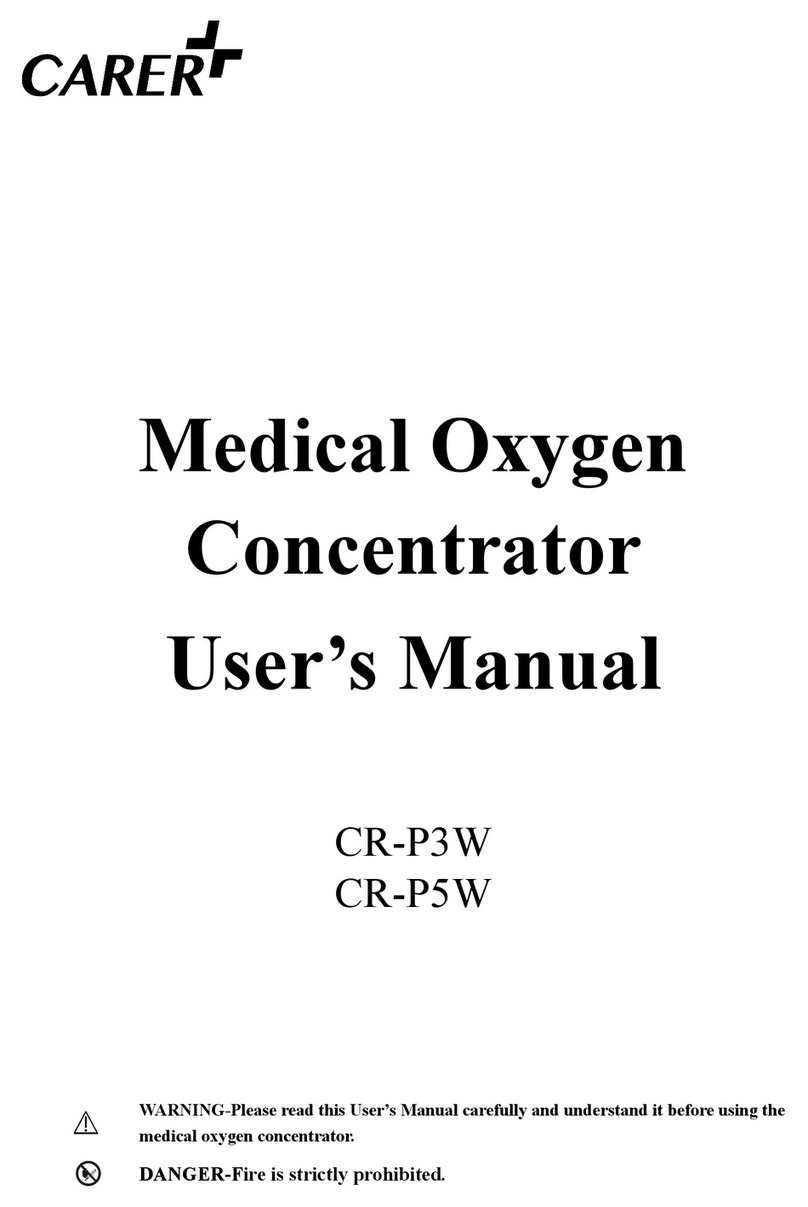CONTENTS
⚫Important Safety Information ................................................................................................................ 2
⚫Symbols and Definitions........................................................................................................................ 2
⚫Overview................................................................................................................................................ 3
⚫Reason for a Physician to Choose Oxygen Therapy.............................................................................. 3
⚫Scope of Application.............................................................................................................................. 3
⚫Principle for Oxygen Concentrating ...................................................................................................... 3
⚫Contraindications, Precautions, Warnings, and Instructions.................................................................. 3
⚫Main Structure ....................................................................................................................................... 4
⚫Specifications/Models............................................................................................................................ 4
⚫Important Spare Parts of Oxygen Concentrator..................................................................................... 4
⚫Installation of Oxygen Concentrator...................................................................................................... 5
⚫Preparation before Operating the Oxygen Concentrator ....................................................................... 6
⚫Operation Instructions............................................................................................................................ 7
⚫Alarm ................................................................................................................................................... 10
⚫Repairing and Maintenance of Oxygen Concentrator ..........................................................................11
⚫Identifying and Removing Failures ..................................................................................................... 13
⚫Specifications and Parameters ............................................................................................................. 14
⚫After-sales Services ............................................................................................................................. 15
⚫Environmental Protection .................................................................................................................... 15
⚫Graph of Oxygen Concentration Value and Flow Function................................................................. 16
⚫Change of Oxygen Concentration with Flow under Different Pressure Conditions in the Altitude Range
of 0-4000m.................................................................................................................................................. 16
⚫Electromagnetic Compatibility (EMC)................................................................................................ 17
⚫Supplementary Instruction ................................................................................................................... 20
⚫Storage and Transportation Conditions................................................................................................ 21
⚫Service Life.......................................................................................................................................... 21
⚫Packing List ......................................................................................................................................... 21




























